- Home
- Roald Dahl
Fear
Fear Read online
Roald Dahl
* * *
FEAR
Contents
Introduction Roald Dahl
W. S. L. P. Hartley
Harry Rosemary Timperley
The Corner Shop Cynthia Asquith
In the Tube E. F. Benson
Christmas Meeting Rosemary Timperley
Elias and the Draug Jonas Lie
Playmates A. M. Burrage
Ringing the Changes Robert Aickman
The Telephone Mary Treadgold
The Ghost of a Hand J. Sheridan Le Fanu
The Sweeper A. M. Burrage (Ex-Private X)
Afterward Edith Wharton
On the Brighton Road Richard Middleton
The Upper Berth F. Marion Crawford
Acknowledgements
Follow Penguin
PENGUIN BOOKS
FEAR
Roald Dahl is best known for his mischievous, wildly inventive stories for children. But throughout his life he was also a prolific and acclaimed writer of stories for adults. These sinister, surprising tales continue to entertain, amuse and shock generations of readers even today.
For James Kelly
Introduction
by Roald Dahl
My wise and venerable old friend Alfred Knopf, the American publisher, had a half-brother called Edwin. Edwin was a film producer in Hollywood, and a long time ago, back in 1958, I went to him with the idea that we should do a television series together of nothing but ghost stories. I pointed out that no one had done this before. I said there existed a whole world of ghost stories to choose from and that it wouldn’t be difficult to come up with a stunning batch of tales. All one needed for a series like this was twenty-four stories.
Eddie Knopf thought it over. He talked with his associates and everyone agreed that it was a splendid idea. Emlyn Williams was approached and he agreed to be the introducer of each episode. My own primary task was to search out the twenty-four super ghost stories. I was also to write the screenplay for the first one (the pilot) and for several others.
On the face of it, my job didn’t appear too onerous. In the second half of the last century and in the early part of this one, ghost stories were very much the fashion. Dickens had written one. J. M. Barrie had done several. So had Bulwer Lytton and D. K. Broster and George Eliot and Anatole France and Mrs Gaskell and Théophile Gautier and L. P. Hartley and Nathaniel Hawthorne and Thomas Hardy and Washington Irving and Henry James and Walter de la Mare and Maugham and Maupassant and Poe and Sir Walter Scott and Mark Twain and H. G. Wells and Elizabeth Bowen. Even Oscar Wilde had written one called The Canterville Ghost. Great names all of these. I looked forward very much to making my selections.
One of the first things I did was to call on Lady Cynthia Asquith who was an acknowledged expert on ghost stories and had published several anthologies. She was old and frail and she was in bed when she received me. But she was as bright as ever and gave me lots of good advice about how to start the great search.
After a tremendous amount of scuttling around, including several visits to the British Museum Library, I managed to collect just about every ghost story that had ever been written. My house was filled with books and piles of old magazines, both bought and borrowed. Then I began to read.
I got a bit of a shock. The first batch of fifty or so stories I read were so bad it was difficult to finish them. They were trivial, poorly written and not in the least spooky. Spookiness is, after all, the real purpose of the ghost story. It should give you the creeps and disturb your thoughts. The stories I was reading did none of this. Some of the worst ones were written by the most famous writers. I read on. I couldn’t believe how bad they were. Nevertheless, I carefully recorded every single story I read in a notebook and I gave each one of them marks. Most of them got nought out of ten.
Then suddenly a bright star flashed across the murky sky. I had found a good one. The end of it gave me the shivers. It was called Harry by Rosemary Timperley. That bucked me up and I went on with my labours.
I read another hundred or so bad ones. Then I found a second good one. It was The Open Door by Mrs Oliphant.
After I had read altogether some three hundred published stories, I had succeeded in discovering six good ones. That was not many, but it was anyway a beginning. The six, including the two just mentioned by Rosemary Timperley and Mrs Oliphant, were The Telephone by Mary Treadgold, Afterward by Edith Wharton, Spinsters’ Rest by Clemence Dane and The Four-Fifteen Express by Amelia B. Edwards.
Hang on a second, I thought. What was going on here? Every single one of these stories was written by a woman! What an extraordinary thing. I began to wonder whether the really good ghost story belonged solely to the female. Was she perhaps more sensitive in that small delicate area than the male? It was beginning to look like it.
With a feeling that I was perhaps making a rather remarkable literary discovery, I ploughed on. And by golly, if the next good one wasn’t also by a woman! It was Cynthia Asquith’s God Grante That She Lye Stille. I got rather excited.
But alas, the next excellent one was by a man. It was Playmates by A. M. Burrage. And what a good one it was. After that, there followed a whole group of men, L. P. Hartley, Dickens, E. F. Benson, John Collier and the rest. The men were catching up.
At the end of this marathon reading session, I counted that I had read seven hundred and forty-nine ghost stories. I was completely dazed by reading so much rubbish, but as I staggered away from the piles of books and magazines, I had the satisfaction of knowing that I had found twenty-four good ones and another ten possibles for Eddie Knopf’s television series.
The male ghost story writers did eventually catch up with the females, but only just. Out of my best twenty-four (there is not room to include all of them in this book), the final score was thirteen to the men and eleven to the women. These figures were intriguing and I’ll tell you why. Many people have been fascinated and perplexed by the failure of women to reach the top rank in two of the three major creative arts, music and painting. With writing it is different. Ever since the Brontës and Jane Austen got them going there have been plenty of fine women novelists around. But this is not true of music or of painting and sculpture. In the whole of history there has never been a woman musical composer anywhere near the top rank. There hasn’t really been one in painting or sculpture either. The greatest woman painter was probably Popova, followed by two other Russians, Goncharova and Exter. There was also Mary Cassatt, Barbara Hepworth and possibly Georgia O’Keefe. But none of them could hold a candle to the huge mass of great male names in painting, from Dürer to Picasso.
But to go back to women as writers. For about a hundred and thirty years they have been producing good novels, even some great ones. But they don’t seem to be able to write plays or top-rate short stories. I don’t think a woman has ever written a classic play. And as for short stories – no, not really. By this I mean great short stories. The greatest twenty-five short stories ever written (if it were possible to agree on which they were) might conceivably include one by Katherine Mansfield, one by Willa Cather and one by Shirley Jackson. But that would be all. The score would be twenty-two to three in favour of the men.
And yet – and here is the interesting thing – ghost stories, at least the kind I am talking about, are short stories. And in that particular and very special category the women run the men very close indeed, a lot closer even than in the novel, with the score at thirteen to the men and eleven to the women. But it is the women who have written some of the very best ones.
So perhaps there is something after all in the theory that women have an unusual flair for writing about the supernatural. Who can forget Shirley Jackson’s marvellous story, The Lottery? Admittedly it isn’t a ghost story. But i
t deals with the same sort of eerie and unfathomable events and does it in a manner I have never seen matched by any male short story writer.
I have no doubts at all where women stand when it comes to one of the most important facets of all creative literature. I mean of course children’s books. You may scream all you like when you read that statement, and I do not say it because I sometimes write children’s books myself. I say it because I am convinced that they are one of the most important. All other forms of fiction are written purely to divert and entertain the adult mind. Children’s books must also divert and entertain, but they do something else at the same time. They actually teach a child the habit of reading. They teach him to be literate, they teach him vocabulary and nowadays they teach him that there can be better ways of passing the time than watching television.
The manner in which children’s books are virtually ignored by literary magazines, by Sunday newspaper reviewers and by the so-called literary establishment in general is scandalous. Biographies are given the most attention of all, then adult novels, then poetry. Children’s books are only noticed every now and again. And yet – now listen carefully please – and yet, let any of these high-blown authors or critics attempt to write a children’s book, I mean a fine children’s book that children will fall in love with and which will endure through the years, and he will almost certainly fail.
I am fairly sure that it is more difficult to write a fine and enduring children’s book than a fine and enduring novel. My reason for making this contentious statement is as follows. How many adult novels are written every year that will still be read widely twenty years later? Probably about half a dozen. How many children’s books are written every year that will still be read widely and avidly twenty years later? Possibly only one.
You may argue that the big writers do not bother even to try to write children’s books. You would be wrong. Most of them have tried. Quite a long time ago, a New York publisher called Crowell-Collier had what they thought was a brilliant idea. They decided to invite all the most celebrated writers in the English speaking world to write a children’s story. They would tempt them with a high fee. They would then combine all the results in one volume and they’d have a classic on their hands.
The invitations went out, and because of the high fee and the relative shortness of the task, all the writers accepted. These were big names, mind you, famous novelists, so-called giants of the literary world. I won’t mention who they were but you would know them all.
The stories came in. I saw each one of them. Only one writer, Robert Graves, had any conception of how to write for children. The rest of the stories were guaranteed to anaesthetize in two minutes flat any unfortunate child who got hold of them. They were unpublishable. The project was abandoned and the publishers lost a good deal of money.
When it comes to writing classic children’s books, women triumph over the men. They are pretty good at novels, they are better still at ghost stories, but they are best of all at children’s books. You have Frances Hodgson Burnett’s The Secret Garden. You have Beatrix Potter. You have P. L. Travers’s Mary Poppins and Dodie Smith’s One Hundred and One Dalmatians. You have Astrid Lindgren’s Pippi Longstocking, E. Nesbit’s The Railway Children, Mary Norton’s The Borrowers and quite a few more. Now these are classics, and by that I mean that at least half of all the children between the ages of six and ten in the United States, the United Kingdom, Europe and Japan will have read them. That is many millions. I venture to say it is several millions more than the number of adults alive today who have read, let us say, a fine Graham Greene novel or a Nabokov.
The writer of a classic children’s book can go into any school or any home where there are children in any of the countries I have mentioned and he or she will be known and welcomed. I don’t mean middle-class homes only, which is where the good novels are read. I mean any home. None of the entrenched literary establishments of London, New York or Paris realize the power of a children’s book once children have fallen in love with it. Or if they do, they don’t want to admit it. Generation after generation of children continue to read a classic children’s book over and over again and school teachers keep it always in their classrooms.
I have wandered away from ghost stories. I apologize for this, but I have wanted for a long time to have my little say about children’s books and especially to pay tribute to the part that women writers have played in creating the classic library.
But to go back to Eddie Knopf and the great television ghost series. By now the series had been officially christened ‘Ghost Time’. My twenty-four choices were sent off to California and were read with immense enthusiasm. It looked, so thought the moguls out there, as if we had a winner on our hands. All we had to do now was to make the films. We couldn’t go wrong. The big boys figured that a series of chilling ghost stories flashed on to the television screens from coast to coast in the winter evenings when it was pitch dark outside would give the entire nation the creeps. No one would dare to go to bed and turn out the light afterwards. Old ladies living alone would be found dead from fright the next morning. Strong Texans would quiver in their high leather boots and fire their six-shooters at the screen to silence it for ever. Children watching the show would be afraid of the dark for the rest of their lives. Psychiatrists would double their business. The Church would protest. And everyone would watch our show every week. It was a heady prospect.
The first step was to make the pilot film. The pilot is important in any series. It has to be good. This is the film that is shown to the network bosses, the advertising agencies and to the advertisers themselves, and after looking at it they either turn thumbs up or thumbs down on putting up the millions that are required to make the whole series. The pilot indicates the flavour and quality of the series and gives a fair idea of what the other twenty-three episodes will be like.
So a really good strong story was essential for the pilot. Out of my twenty-four, the men in California selected The Hanging of Alfred Wadham by E. F. Benson. It was a good story, and it would dramatize nicely.
I wrote the screenplay. The film was shot at Elstree Studios with a first-rate director and top actors, though I’ve forgotten who they were. Emlyn Williams spoke a splendid introduction and a good introductory theme tune was chosen. When all was ready, our great pilot film (it was awfully good) was flown to America and then it was shown to the powerful men who make the mighty decisions.
It was a disaster. The film itself was all right. But we had made a terrible mistake. We had chosen the one story that no American television network would dare to show. It dealt, you see, with Roman Catholicism, and the whole plot of the story revolves around the fact that a priest must never, under any circumstances, reveal to others what he has learned during confession. Alfred Wadham is convicted of murder and is about to be hanged. He protests his innocence but no one believes him. Then, on the evening before the hanging is to take place, another man goes to the prison priest and confesses that it was he and not poor Alfred Wadham who committed the murder. The priest begs him to own up. He refuses. He also reminds the priest very forcibly that he cannot break the secrecy rule of the confessional. The priest, bound by his religious vows, is therefore unable to save the wrong man from being hanged. After the hanging, the ghost of Alfred Wadham does some horrid things to the wretched priest.
You can see it’s a good story. But the sight of it on the television screen would be guaranteed to inflame the hearts of millions of Catholics across the United States. The advertising men and the television bosses who saw the pilot were apoplectic. They threw it out and refused to have anything more to do with our splendid ghost series venture. I have still not quite got over the shock of that rejection and that is probably why I have not included Alfred Wadham in this collection.
So I was left, in the end, with nothing but a very complete knowledge of the ghost stories of the world. I still have all my notes, three large notebooks full of them. So now, some twenty-five years late
r, it seems a good idea to put the good ones together in a book.
Good ghost stories, like good children’s books, are damnably difficult to write. I am a short story writer myself, and although I have been doing it for forty-five years and have always longed to write just one decent ghost story, I have never succeeded in bringing it off. Heaven knows, I have tried. Once I thought I had done it. It was with a story that is now called The Landlady. But when it was finished and I examined it carefully. I knew it wasn’t good enough. I hadn’t brought it off. I simply hadn’t got the secret. So finally I altered the ending and made it into a non-ghost story.
The best ghost stories don’t have ghosts in them. At least you don’t see the ghost. Instead you see only the result of his actions. Occasionally you can feel it brushing past you, or you are made aware of its presence by subtle means. For example, the temperature in a room always drops dramatically when a ghost is around. This was scientifically proved by Harry Price in his interesting book The Most Haunted House in England. If a story does permit a ghost to be seen, then he doesn’t look like one. He looks like an ordinary person.
To me, one of the most compelling of all the stories in the book you are now holding was written by a Norwegian, Jonas Lie. It really is a cruel and wonderful tale, though it suffers a good deal in the translation. Jonas Lie, who died in 1908, is a national hero in Norway although he is very little known beyond those shores. I happen to have a fine painting of him by Heyerdal in my living-room. He is wearing a wide-brimmed black hat and a black cloak, and wherever I sit, he is glaring at me through steel-rimmed spectacles with a terrible icy stare. He looks more than anything else like an undertaker who knows he’s going to get you in the end. But he was a splendid writer and I am certain you will be disturbed by this story of his called Elias and the Draug. I hope you will be equally disturbed by all the other stories in this book. They were written with precisely that end in mind.

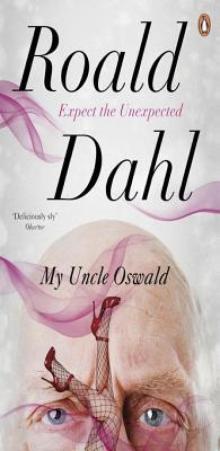 My Uncle Oswald
My Uncle Oswald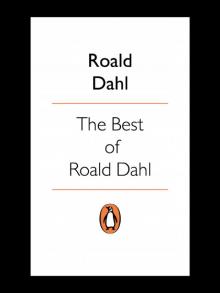 The Best of Roald Dahl
The Best of Roald Dahl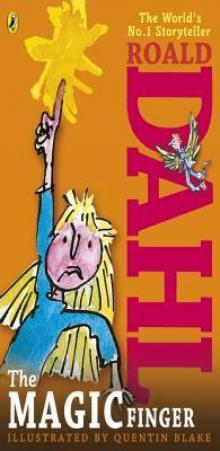 The Magic Finger
The Magic Finger Charlie and the Chocolate Factory
Charlie and the Chocolate Factory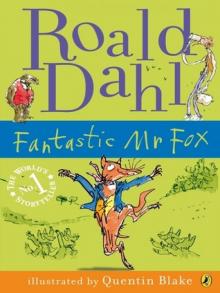 Fantastic Mr Fox
Fantastic Mr Fox Matilda
Matilda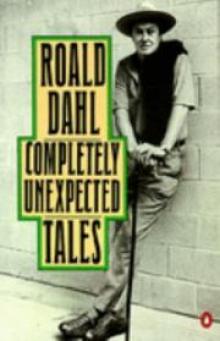 Completely Unexpected Tales: Tales of the Unexpected. More Tales of the Unexpected
Completely Unexpected Tales: Tales of the Unexpected. More Tales of the Unexpected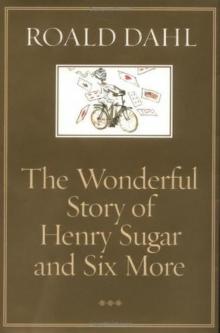 The Wonderful Story of Henry Sugar and Six More
The Wonderful Story of Henry Sugar and Six More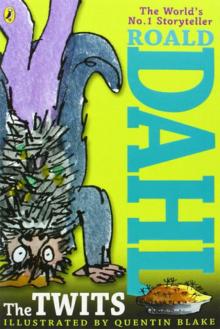 The Twits
The Twits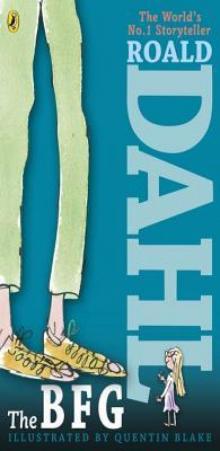 The BFG
The BFG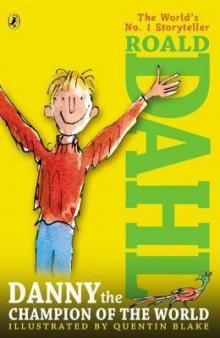 Danny the Champion of the World
Danny the Champion of the World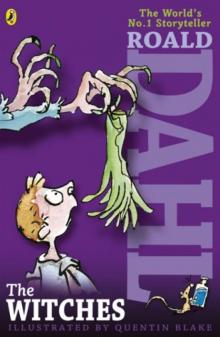 The Witches
The Witches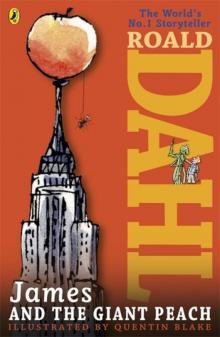 James and the Giant Peach
James and the Giant Peach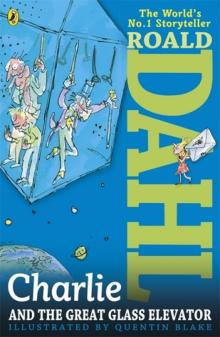 Charlie and the Great Glass Elevator
Charlie and the Great Glass Elevator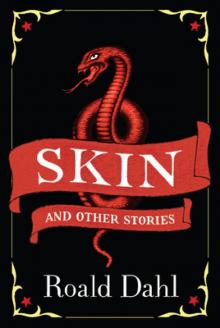 Skin and Other Stories
Skin and Other Stories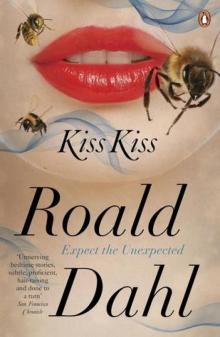 Kiss Kiss
Kiss Kiss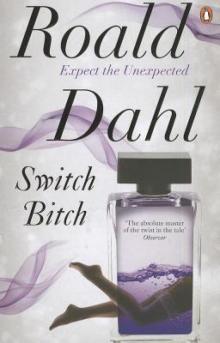 Switch Bitch
Switch Bitch The Giraffe and the Pelly and Me
The Giraffe and the Pelly and Me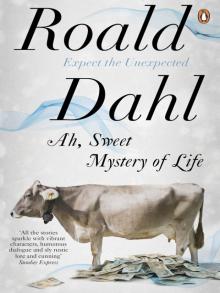 Ah, Sweet Mystery of Life
Ah, Sweet Mystery of Life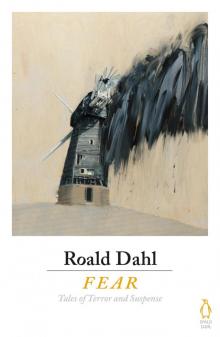 Fear
Fear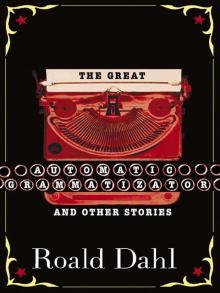 The Great Automatic Grammatizator and Other Stories
The Great Automatic Grammatizator and Other Stories Someone Like You
Someone Like You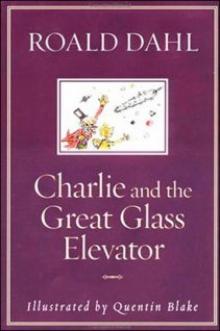 Charlie and the Great Glass Elevator c-2
Charlie and the Great Glass Elevator c-2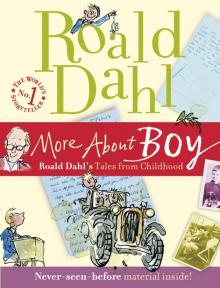 More About Boy
More About Boy Tales of the Unexpected
Tales of the Unexpected The Umbrella Man and Other Stories
The Umbrella Man and Other Stories Dirty Beasts
Dirty Beasts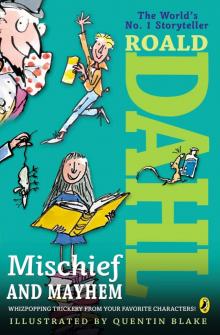 Roald Dahl's Mischief and Mayhem
Roald Dahl's Mischief and Mayhem The Collected Short Stories of Roald Dahl, Volume 1
The Collected Short Stories of Roald Dahl, Volume 1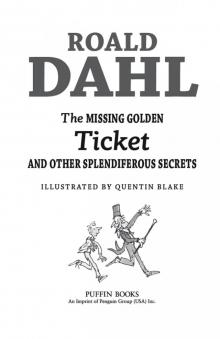 The Missing Golden Ticket and Other Splendiferous Secrets
The Missing Golden Ticket and Other Splendiferous Secrets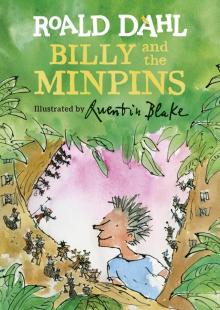 Billy and the Minpins
Billy and the Minpins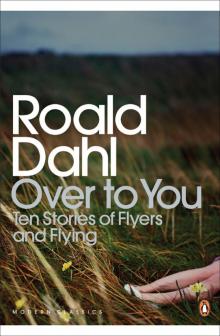 Over to You
Over to You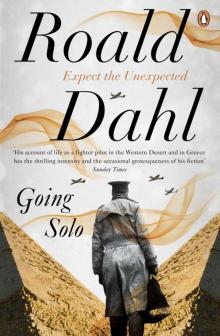 Going Solo
Going Solo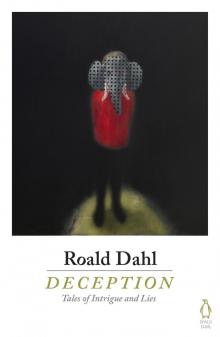 Deception
Deception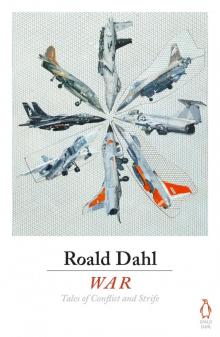 War
War Man from the South ee-3
Man from the South ee-3 More Tales of the Unexpected
More Tales of the Unexpected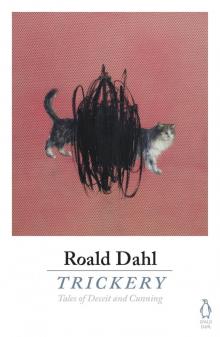 Trickery
Trickery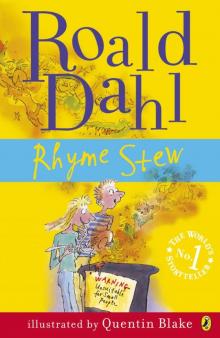 Rhyme Stew
Rhyme Stew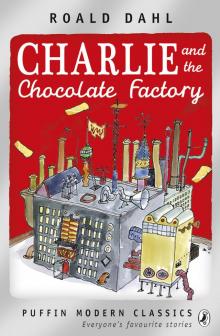 Charlie and the Chocolate Factory (Puffin Modern Classics relaunch)
Charlie and the Chocolate Factory (Puffin Modern Classics relaunch)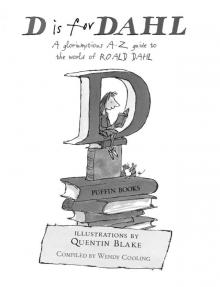 D is for Dahl
D is for Dahl Roald Dahl Whoppsy-Whiffling Joke Book
Roald Dahl Whoppsy-Whiffling Joke Book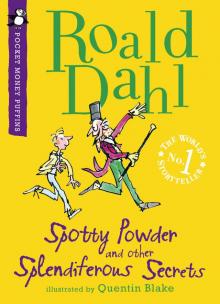 Spotty Powder and other Splendiferous Secrets
Spotty Powder and other Splendiferous Secrets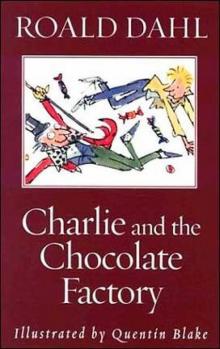 Charlie and the Chocolate Factory c-1
Charlie and the Chocolate Factory c-1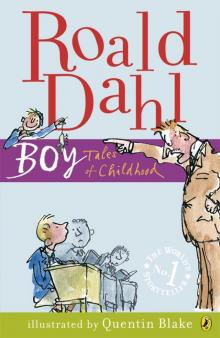 Boy
Boy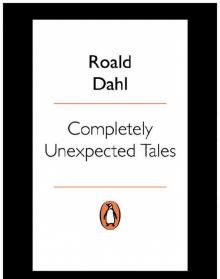 Completely Unexpected Tales
Completely Unexpected Tales Madness
Madness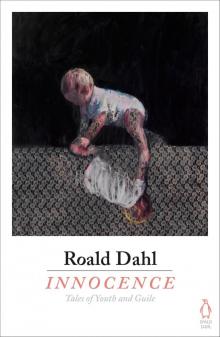 Innocence
Innocence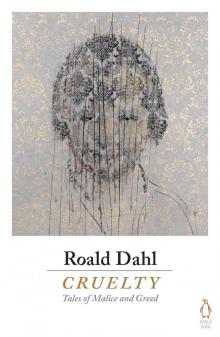 Cruelty
Cruelty George's Marvellous Medicine
George's Marvellous Medicine